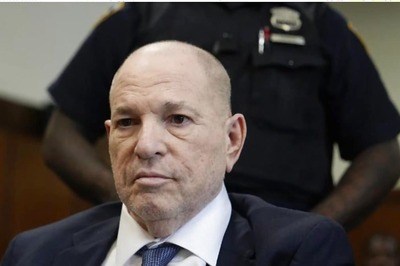
views
CHENNAI: Several months ago, when Thenmozhi (name changed), a resident of Royapettah, consumed poison after a quarrel with her husband, her life was fortunately saved by her relatives who rushed her to a nearby hospital. However, days later, the police came knocking on her doors for questioning as her attempt to commit suicide was a criminal act and a case had to be filed. On the same night, she killed herself by hanging as she was allegedly humiliated by her neighbours in the apartment following the visit of the police. Cases, such as those of Thenmozhi, demonstrate why activists in the city are overjoyed by the decision of the Union Government to decriminalise suicide attempts by amending section 309 of the Indian Penal Code. Experts and activists in the city unanimously believe that the move could pave the way for a drastic decrease in the number of suicides across the country.According to Dr Lakshmi Vijayakumar, member of the WHO’s international network of suicide prevention and research and the founder of Sneha, an NGO that pioneered suicide prevention in the city, ensuring that the act was not illegal would help the victims access timely medical treatment that could save their lives. Often, when a person who had attempted suicide is brought to a medical centre, the treatment is delayed owing to the medico-legal nature of the case. “Like in case of accidents, the golden hour after the attempt is vital to save the victim,” she says, adding that decriminalisation will help medical practitioners focus on saving the patients than facing legal tangles. While the state government devotedly prepares data that indicates the number of suicides every year, which saw a 14.8 per cent increase in 2010 compared to 2009, there is no official data pointing to the number of non-fatal attempts. Experts say that based on several unofficial studies, it has been detected that for every suicide in the country, there were at least 20 to 30 attempts. Also, experience in other countries, where suicide attempts have been decriminalised, like the neighbouring Sri Lanka where such acts have come down by over 30 per cent, offer a positive picture with a trend of decreasing fatalities. Few of the reasons for high suicide rates in the urban areas include a large population migrating from semi-urban and rural areas in search of livelihood and increased economic pressure resulting from a higher standard of living. “Unlike the rural set up where there are support structures in the family that help you vent your emotions, urban life breeds loneliness which could turn out to be your nemesis,” says Geetha Vijayan, a stress counsellor based in Bangalore. Both Chennai and Bangalore have been alternating at the top of the list of cities with high suicide numbers for several years and both have similar characteristics of rapid expansion and high migratory population, she says. Also, alcoholism acts as a notorious instigator of suicide attempts and the fact that the number of males who take their lives was higher than females was a testament to this finding. However, experts believe that while decriminalisation could be a wonderful beginning in dealing with suicides, it cannot solve the problem as a stand-alone measure. Dr Abilasha, founder of Arudhal, which too has a helpline for people with suicidal tendencies, says that apart from the medical support for those who attempt suicide, infrastructure for counselling should be developed by the government to ensure such persons do not attempt taking their lives again. “When a non-fatal case is detected, the person should be redirected to a counsellor so that they can talk through the problem and find a solution,” she says, adding that people who attempt suicide once have a high probability of repeating the act a second time. With consumption of poison and self-immolation ranking high among the methodologies adopted by the victims, these experts say that restricting access to such substances would go a long way in bringing down the rate of attempts. “Most such decisions are impulsive in nature and are done within a short span of time. If the persons can get through this vital period, they might give up on attempting suicide,” says Dr Lakshmi. In fact, her NGO started a pilot programme in Kattumannarkoil where the villagers were provided with a central locker to store their pesticides and it had worked to great effect. Also, general practitioners must be sensitised to detect depression in patients which was a prime cause for suicides. These experts say that most of the victims have shown a tendency to visit a doctor in the month before committing the act and if general physicians could be trained to detect such behaviours, it would help save the person.




















Comments
0 comment